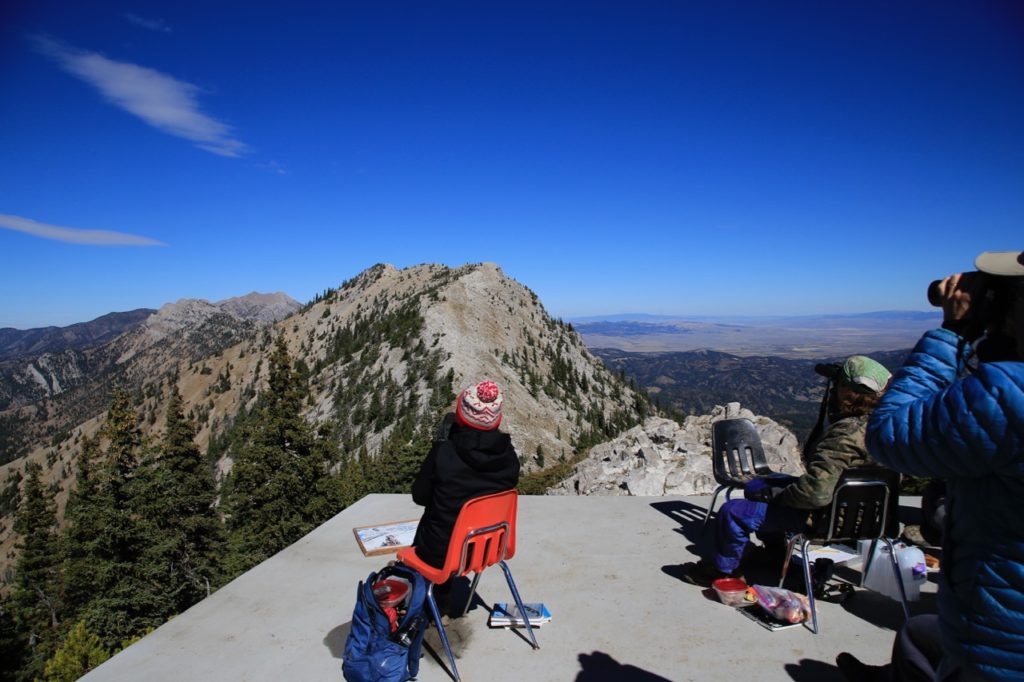Bridger Raptor Count
From the beginning of September through the end of October each year, observers monitor the Bridger raptor migration daily. The primary goals of the count are to assess the status and long-term trends of fall migrant raptor species, and to monitor landscape-level environmental changes using these widespread, apex predators as valuable indicators of ecological health. Combined species counts typically range between 2,000 and 3,500 migrants per fall season.
Track daily flight summaries by visiting the HawkWatch International website:
Raptor Viewing Tips for the Bridgers
The general public is invited to witness one of nature’s most spectacular phenomena as these majestic birds migrate south over the Bridgers!
Additional volunteer observers are always needed to help conduct these counts. For those in good physical condition, it is a 1.5-2 hour hike to the observation point (2,000-ft. elevation gain). Anyone wishing to volunteer please contact Project Coordinator Steve Hoffman at swhoffman0322@gmail.com or call 406-461-5714. We look forward to seeing many of you at the Bridger Lookout this season.


Golden and Bald Eagle activity peaks in October, while Rough-legged Hawks are usually seen only in the latter half of the month. In contrast, species like Ospreys, Broad-winged Hawks, and Swainson’s Hawks pass through mostly in September. For most other raptors, migration begins to build in mid-September, with numbers typically peaking between the last 10 days of September and the first 10 days of October. The late-September to early-October window offers the best chance to see a wide variety of species, while mid-October is especially rewarding for eagle sightings. Peak flight activity occurs from late morning through mid-afternoon, depending on weather conditions.
